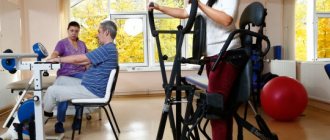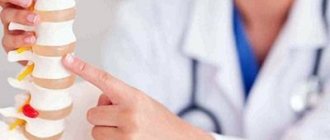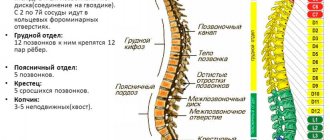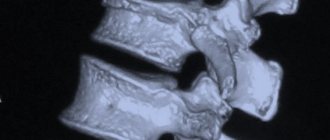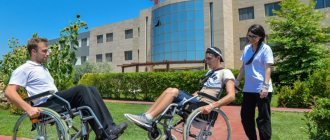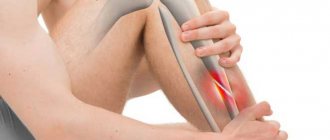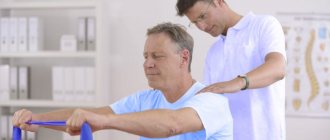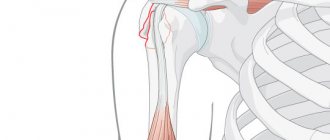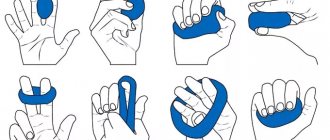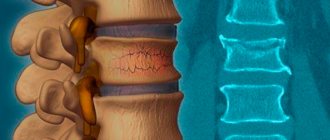Rehabilitation in traumatology and orthopedics is of key importance - it can significantly reduce the period of disability and create optimal conditions for restoring the patient’s activity. The success of the rehabilitation course depends on:
- correct selection of an individual scheme of events;
- start as early as possible (preferably at the treatment stage);
- continuity;
- complex in nature.
Rehabilitation of traumatology and orthopedic patients includes measures aimed at eliminating the consequences of injuries, previous operations, congenital pathologies, etc.
Normalizing the condition of an injured person includes two stages:
- direct treatment - elimination of primary consequences;
- rehabilitation period - restoration of health, normalization of vital activity, adaptation of the patient to new conditions.
Rehabilitation after injuries is designed to ensure restoration to normal or to effectively compensate for impaired function. At the same time, the process of returning to a normal state should be as comfortable as possible for the human body and psyche. A number of specific tasks can be identified:
- minimization or complete elimination of pain;
- acceleration of wound healing, regeneration of damaged tissues;
- restoration of bones, tendons, ligaments to the maximum possible natural state;
- return and preservation of motor, supporting and other functions of the musculoskeletal system;
- preventing the formation of calluses, lumps, growths, hygromas and other post-traumatic formations on damaged tissues;
- elimination of vascular damage;
- preventing the appearance of edema;
- maintaining normal muscle tone and blood circulation in the affected area;
- prevention of atrophic processes during long-term limitation of mobility (bed rest);
- psychological support.
Rehabilitation activities often consist of several courses combined into a complex. The specific set of methods, the intensity of their use and duration depend on the situation and can vary greatly.
Injury recovery programs
Recovery from injury may include the following:
- motor mode and orthotics;
- therapeutic exercises - a set of special physical exercises performed under the supervision of a specialist;
- massage - increases tone and contractile function of muscles;
- hydrokinesitherapy - gymnastics in water, simplifies exercises, has an additional beneficial effect on blood circulation;
- mechanotherapy - an addition to exercise therapy, performing exercises using special mechanical simulators;
- physiotherapy - lymphatic drainage anti-inflammatory treatment, myostimulation (gives an analgesic effect);
- acupuncture - exposure to biologically active points of the body with special needles, which allows you to mobilize the internal resources of the body;
- occupational therapy is a restorative technique in which the performance of certain productive activities becomes a supporting and stimulating factor;
- adapted sports training;
- shock wave therapy;
- drug therapy.
Physical exercises help activate muscle contractions, blood flow in tissues, relieve swelling, and increase the energy capabilities of muscles. Improved nutrition of muscle tissue accelerates the replacement of various post-traumatic defects in the muscles themselves, bone tissue, ligaments and tendons.
A very important role is played by systematic movements, even with a small amplitude due to restrictions (during traction, under a cast) - regular exercises prevent the development of atrophy and the appearance of contractures.
Such procedures can be used not only as rehabilitation after injuries, but also for preventive purposes - to maintain health and prevent loss of ability to work due to problems with the musculoskeletal system.
Cervical spine fracture
The consequences of a fracture of the cervical spine are the most serious. When a vertebrae is fractured, the spinal cord is more often damaged, and less often the medulla oblongata. Violation of the integrity of the spinal cord can lead to complete paralysis or death.
There are 7 vertebrae in the cervical spine. The first three are injured much less frequently than the others, but it is their damage that leads to the most severe consequences. A fracture of the first vertebra (atlas) is also called a Jefferson fracture. With this injury, a person feels a sharp pain in the neck and back of the head. There is a high chance of spinal cord damage.
Another type of cervical injury is the “executioner’s” fracture. In this case, the cervical vertebra changes its position relative to other vertebrae and is displaced. The injury occurs as a result of sudden movement of the neck or severe compression of the spine. When the second cervical vertebra is fractured, a person may lose consciousness and there is a loss of sensitivity in the upper extremities. A severe fracture of the second cervical vertebra often leads to death.
Restoration of the spine and relief of pain after a fracture is performed in a hospital setting. The patient will need to undergo a long course of treatment and rehabilitation after a compression fracture of the cervical spine.
Make an appointment
Advantages of rehabilitation after injuries at the Federal Scientific and Clinical Center of the Federal Medical and Biological Agency in Moscow
The Federal Scientific and Clinical Center provides full-fledged rehabilitation on an integrated basis - in all areas: medical, household, social. Our patients are constantly under the supervision of specialists: a rehabilitation specialist and an orthopedic traumatologist.
Our technologies
We carry out rehabilitation after injuries using the most modern technologies.
“Artromot” simulators are specialized electromechanical means of passive influence used to develop joints. Absolutely painless for the patient. Allows you to work with knee, elbow, shoulder, hip joints, ankles, ankles, wrists.
The Biodex robotic system is an advanced complex of neuromuscular testing and rehabilitation exercises. Provides the ability to mobilize joints in different directions and provide static and dynamic loads on muscles. A highly effective tool for restoring motor functions.
Shock wave therapy is a modern non-invasive treatment and rehabilitation technique designed to work with the musculoskeletal system. The essence is the effect on tissue of infrasound pulses with high pressure. Such a shock wave stimulates the processes of regeneration and microcirculation, reduces inflammation, reduces pain, and loosens dense bone post-traumatic formations.
Three groups of patients with spinal injury or pathology for choosing a rehabilitation program
Clinically, there are three groups of patients who have suffered diseases or injuries of the spine and spinal cord, which differ in the severity of damage and consequences:
- Patients with mild damage to the spinal cord , in which its functions are not impaired, or almost not impaired.
- Patients with pathology, moderate or severe injury to the spine and spinal cord, localized in the lumbar region or lower thoracic vertebrae.
- Patients with pathology, moderate or severe injury to the spine and spinal cord , localized in the area of the cervical spine or upper thoracic vertebrae.
Depending on whether each patient belongs to one of these groups, he is assigned a rehabilitation program:
- For patients from group 1, rehabilitation has the goals of completely restoring all functions of the damaged spinal cord and spine, stabilizing the spinal column, strengthening the muscular corset around the spine, eliminating pain and restoring full motor activity, returning to work capacity. The main methods of rehabilitation of the 1st group of patients are physical therapy, physiotherapy, massage, balneotherapy. In terms of terms, rehabilitation of these patients can take a period from 1 month to 6-8 months.
- In patients of group 2, rehabilitation is designed to ensure the maximum possible restoration of the functions of the spine and spinal cord. People must be independent in everyday life, have the skills and abilities to take care of themselves in everyday life, and control the processes of urination and defecation. Patients from the second group, in the process of social rehabilitation, may be able to drive a car, return to their previous job, or learn a new profession. Rehabilitation methods include physical therapy, massage, physiotherapy, acupuncture, as well as special measures that are aimed at restoring the function of urination and defecation. In terms of terms, the rehabilitation program for this group of patients takes a period of 10-12 months or more.
- For patients of group 3 with severe lesions of the spine and spinal cord , rehabilitation aims to restore partial self-care skills, as well as gradually restore lost reflexes, muscle tone, and sensitivity. The complex of rehabilitation measures for such patients includes physical therapy and massage, the use of various technical means of rehabilitation and special equipment. The period of the rehabilitation program for patients in this group can range from 1.5-2 years or more.
Physiotherapy
If the spinal fracture is not complicated, then physical therapy should begin as early as possible.
What should be included in the set of exercises:
- The first week should begin with breathing exercises and movements of the joints of the arms and legs.
- Over the course of a month, you should gradually increase the complexity of your movements. The main goal is to strengthen the muscles of the back and limbs.
- Rolling over in bed from side to side.
- Raise and hold your legs in this position. In this case, try to maintain an angle of 45 degrees.
- After one or two months, carefully begin to walk. During this period, exercises are done in a kneeling position. You should start walking for no more than 15-20 minutes at first.
- A back massage is prescribed.
- About 3-4 months later, under the control of an X-ray of the back, you can begin to sit down for 5-10 minutes. Do several repetitions a day.
- Forward bends and swimming pool.
Depending on the severity of the condition, a person is considered disabled for 4 months to one year.
For a couple of years you should not put extreme stress on your back - jumping, running, lifting weights. You should not wear a corset after transpedicular fixation. Exercise therapy can be started after 2-3 days.
Possible consequences of injury are the development of osteochondrosis and hernia. The size of the vertebrae is disrupted, therefore, their motor capabilities change.
An osteoporotic fracture in the thoracic region can deform the spine. The patient may experience constant pain and shortness of breath. Gets tired quickly. The functioning of his heart and stomach is disrupted.
The most severe consequence of a fracture—paralysis—requires surgical intervention and a long postoperative recovery period.
The consequences of a compression fracture of the spine do not always appear immediately. Bone fragments can make the canal in which the spinal cord is located narrower, which can result in damage to nerve tissue. This, in turn, can cause stenosis - numbness of the arm or leg, muscle weakness. If any unwanted symptoms appear, you should immediately consult a doctor for advice and help.
Sign up for a consultation
Prices in your city
Russia
- Russia
- Kazakhstan
- Azerbaijan
- Belarus
- Kyrgyzstan
- Latvia
- Uzbekistan
- Ukraine
Moscow
- Adler
- Almetyevsk
- Anapa
- Angarsk
- Arkhangelsk
- Astrakhan
- Balashikha
- Barnaul
- Belgorod
- Biysk
- Blagoveshchensk
- Bratsk
- Bryansk
- Vladivostok
- Vladimir
- Vologda
- Voronezh
- Grozny
- Ivanovo
- Irkutsk
- Yoshkar-Ola
- Kazan
- Kaliningrad
- Kaluga
- Kemerovo
- Korolev
- Kostroma
- Kotlas
- Krasnodar
- Kyzyl
- Leninogorsk
- Magnitogorsk
- Makhachkala
- Moscow
- Naberezhnye Chelny
- Nazran
- Nalchik
- Nizhnekamsk
- Nizhny Novgorod
- Novodvinsk
- Novokuznetsk
- Novosibirsk
- October
- Omsk
- Pavlovo
- Penza
- Permian
- Petrozavodsk
- Pskov
- Pushkino
- Rostov-on-Don
- Ryazan
- Samara
- Saint Petersburg
- Saransk
- Saratov
- Sarov
- Sevastopol
- Sergiev Posad
- Smolensk
- Sochi
- Stary Oskol
- Sterlitamak
- Tambov
- Tomsk
- Tula
- Tyumen
- Ulan-Ude
- Ulyanovsk
- Ufa
- Khabarovsk
- Khimki
- Chelyabinsk
- Yaroslavl
Select a branch
- m. Aviamotornaya - Moscow, st. Aviamotornaya, 10, building 2
- m. Academicheskaya - Moscow, st. Dm. Ulyanova, 31
- metro station Altufyevo - Moscow, Altufevskoe highway, 70, building 2
- m. Bagrationovskaya - Moscow, st. Novozavodskaya, 27A
- m. Belorusskaya - Moscow, 1st st. Yamskogo Polya, 24
- m. Boulevard Dm. Donskoy - Moscow, st. Feodosiyskaya, 2
- metro station Butyrskaya - Moscow, 17th proezd Maryina Roshchi, 4, building 1
- m. Kashirskaya - Moscow, Kashirskoe highway, 43, building 4
- Khodynka metro station, CSKA metro station, Polezhaevskaya metro station - Moscow, Berezovaya Roshchi passage, 12
Symptoms
This injury can be recognized by certain signs, the main one of which is intense pain affecting the entire back area. The following symptoms also indicate a compression fracture:
- severe pain at the time of injury;
- numbness, weakness of the upper and lower extremities;
- spine mobility becomes limited;
- the pain is girdling in nature, radiating to the legs or arms;
- discomfort in the back appears when exhaling or inhaling;
- general weakness of the body increases;
- human fatigue increases.
Such symptoms clearly indicate that a compression fracture has occurred. The diagnosis is confirmed if unpleasant pain occurs when pressing on the spinal axis.
Why is rehabilitation needed?
After completing the course of treatment for a spinal injury, rehabilitation begins, during which a number of tasks need to be solved:
- restore the functions of the nervous system, which regulates all vital processes;
- eliminate trophic disorders (if any);
- restore impaired or lost motor skills;
- restore the mobility of the spine, as well as the tone and strength of the muscles that control body position and movement;
- restore all types of sensitivity.
A person learns again to stand, sit, walk, and perform movements of the torso and limbs, and this can be quite difficult to do, given the long period of inactivity, as well as the inability to perform even the simplest movements. At first, every movement can cause pain, and in addition, there is a certain fear, fear of damaging the injured area.
Consequences
The consequences of a compression fracture of the spine can be very serious. Their severity depends on the severity of the injury, the extent of damage to the spine, and the adequacy of the therapy performed. Complications after a spinal fracture can occur due to severe trauma, improper transportation of the victim, or the provision of unprofessional assistance to him. Therefore, if you suspect a spinal fracture, you must call an ambulance and not touch the victim (of course, if his situation is not life-threatening).
The consequences of a spinal fracture include:
- Instability of the vertebrae in the spinal column;
- Impaired conduction of nerve fibers as a result of compression of the nerve roots of the spine;
- Radiculitis;
- Rachiocampsis;
- Formation of kyphosis (hump);
- Constant back pain;
- Breathing disorders;
- Callus;
- Intervertebral hernia;
- Infection of the damaged area;
- Inflammation and suppuration;
- Paralysis of limbs.
Urological consequences of a spinal fracture include disruption of urination and the functioning of the urinary system. In some cases, patients experience erectile dysfunction.
Prevention
To avoid such a fracture in the future, you should take care of the skeletal system and try to strengthen it. After the age of 40, undergo annual diagnostics to determine the condition of your bones. To do this you need to exercise regularly. The best activity is considered:
- moderate running;
- fitness classes;
- swimming;
- dancing.
Walk outdoors in the sun as often as possible so that the body receives the necessary dosage of vitamin D. In order to strengthen the skeletal system, you should normalize your diet. The daily menu should be enriched with foods containing large amounts of calcium. These are cheese and sour cream, natural cottage cheese, almonds, herbs and fish. Walnuts, bananas, and grain products will help restore bone density. It is useful to eat legumes, celery and seafood.
Avoid cigarettes, strong tea, coffee, cocoa, chocolate, alcoholic and carbonated drinks. Use margarine, butter, and mayonnaise less often.
Diagnostics
In the Yusupov Hospital, if a spinal fracture is suspected, a comprehensive examination of the patient is carried out. It includes the following studies:
- Computed tomography – for a detailed study of the structure of all damaged vertebrae;
- X-ray of the spine - to identify a damaged vertebra;
- Myelography – makes it possible to assess the general condition of the spinal cord in the area of injury;
- Magnetic resonance imaging – determines the presence of soft tissue damage.
After receiving the research results, the attending physician analyzes them and makes a final diagnosis.
Make an appointment
Hospitalization
First of all, a patient with a spinal fracture undergoes hospitalization. It is laid on a mattress, under which there is a solid board of wood. The spinal fracture is fixed. Care for someone who has experienced such an injury should be based on what deformations and disorders are observed. In cases where the spinal cord is affected, preventive measures must be taken against bedsores. After all, autonomic function, metabolism and blood circulation below the injury are disrupted here. The legs should be placed in a physiological position using pillows. We also cannot allow foot sagging and pulmonary congestion.
To rehabilitate respiratory function, the following exercises are necessary:
- Inflate balloons;
- Blow air from the lungs through a tube into a container with liquid;
- Breathe deeply;
- Breathe deeply, creating a variety of sounds as you exhale.
It is recommended to use a special bed where you can raise your head and legs. This will help regulate blood circulation in case of a spinal fracture.
